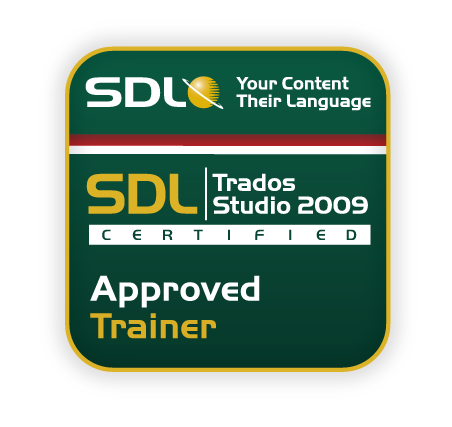So what to do, if none of the other options I described earlier in the first part of this topic works and you absolutely need to deliver an uncleaned Word file to your client? You have two options: 1) Give up and translate the file in Word using Trados Workbench, or 2) Translate the file first in Studio and then again with Workbench utilizing the project/file-specific TM from Studio. The latter option is not actually as crazy as it may sound at first. It really depends on how much more you prefer Studio and benefit from translating in Studio compared to Workbench, but it also depends on the file in question. If everything goes well, the retranslation goes very quickly and more or less automatically by using the “Translate to Fuzzy” command since every segment should be a 100% match. However, there are certain things that can slow down the retranslation, such as formatting and segmentation rule differences.
Formatting
In Studio, formatting is done with tags. Every formatted sentence fragment is surrounded by a pair of tags that define the formatting (color, bold, italics, highlighting, font, superscript, etc.). These tags will also be included in the exported TMX file, and when the TMX file is imported into a Trados Workbench TM the tags are included. However, in the Workbench TM they become “placeholder” tags of sorts and don’t apply formatting anymore (they actually appear as <span> and </span> tags). And because of this, the source sentence isn’t a 100% match anymore and your memory match target sentence is missing all the formatting. In other words, the fast & furious translate to fuzzy action comes to a halt and you have to manually apply the needed formatting and then use the “Translate to Fuzzy” command again to continue with the retranslation. Not really that big of a deal to have to stop a few times here and there but it’s easy to see that it can get very old very soon if you have a long document and a lot of formatting. Note, however, that this is not an issue if the whole segment has the same formatting because in those cases there are no formatting tags in the translation unit and Workbench applies the formatting automatically to the whole segment.
Segmentation differences
In addition to formatting, segmentation rule differences can also affect the “Translate to Fuzzy” process. The following three seem to be the most common differences between the default segmentation rules of Studio and Trados 2007:
- Colon: segments in Trados 2007 but not in Studio
- Number at the end of a sentence (such as 2007 or 7 but not 6.0): segments correctly in Studio but not in Trados 2007
- Abbreviation with a period (such as etc.) at the end of a sentence: segments correctly in Studio but not in Trados 2007
Of course, if you see that these may cause problems, you can always change the segmentation rules either in Studio or Workbench, as needed.
I have used this retranslation method a few times, and for me it was definitely worth the extra few steps involved. However, one of those files was a manual where all software interface references were in bold which meant that in some sections every sentence had at least one word in bold and stopped the “Translate to Fuzzy” process. I admit, that sarted getting a bit annoying. Luckily it was a small file.
Of course, none of this would be necessary if we just had a conversion tool that could convert SDLXLIFF files to the Trados 2007 “unclean Word file” format…


February 18, 2011 at 9:52 am
Hi and thanks for the great tips!
I’d like to add one to the list because I found it very useful recently.
There’s another way to translate a file in Trados 2007 using the TM from Studio 2009, it’s directly in Translator’s Workbench.
In Tools, you have a Translate option. You select your file (having imported your TM already) and there you go. I used this to avoid formatting issues with tables and I’m planning on using it again in the future because it was way quicker than using Word, although you do need to check the file in Word afterwards.
Best regards,
Sophie
February 18, 2011 at 10:10 am
Thanks Sophie. That sounds very good. Did you lower the translation match percentage from the default 100% or lower the formatting penalty to 0% in order to get those problem segments translated automatically?